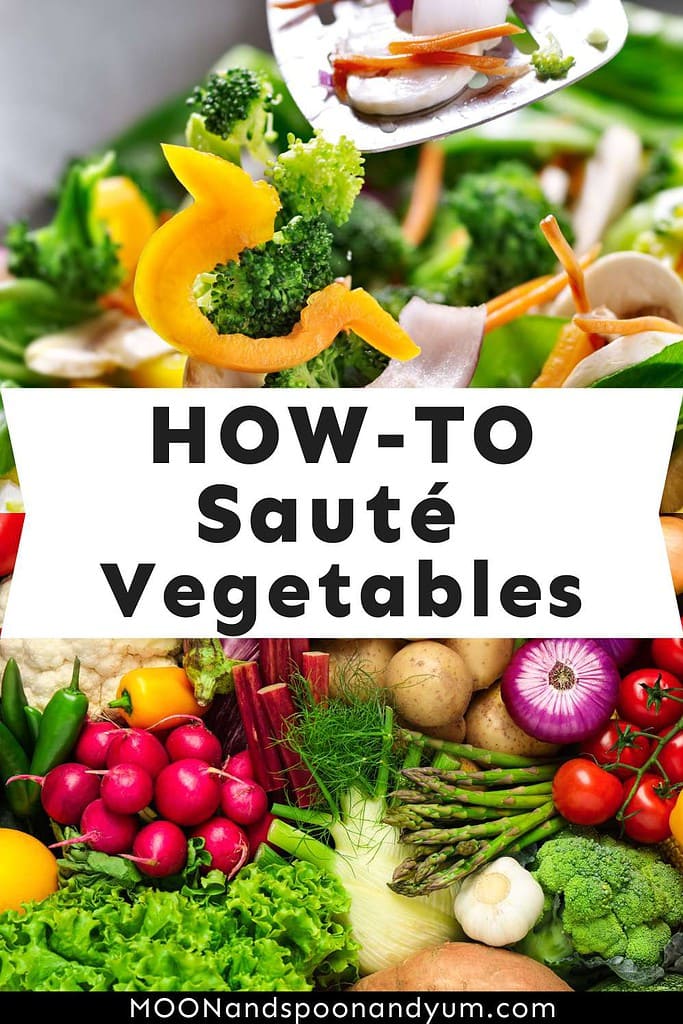How to Saute Vegetables: A Guide to Perfectly Cooked Veggies
Learn how to sauté vegetables like a pro with our comprehensive guide. Discover the secrets to achieving perfectly cooked veggies every time. Say goodbye to soggy or undercooked vegetables and master the art of sautéing with confidence.
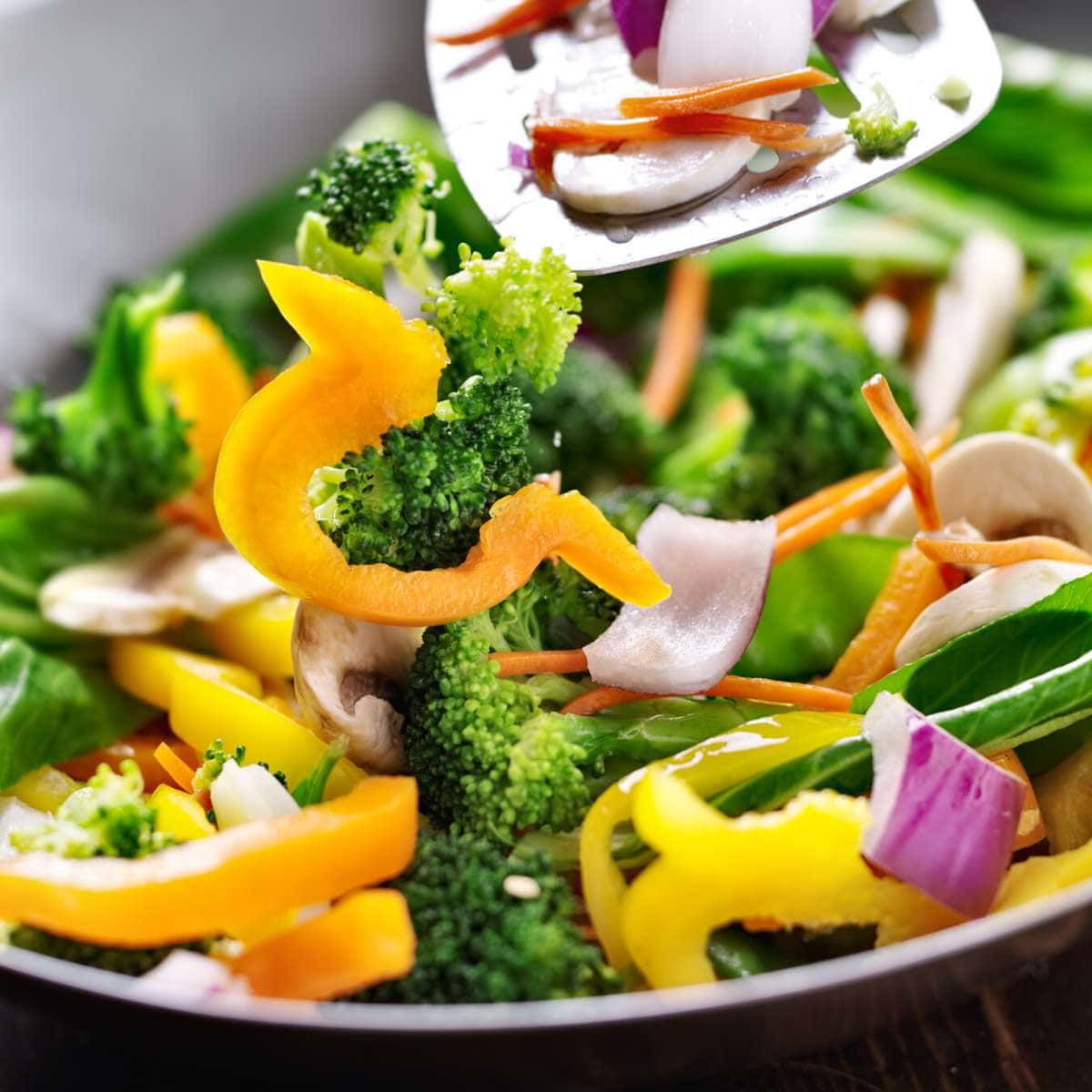
Sauteing vegetables is a quick and easy way to cook them while retaining their flavor and nutrients. Whether you are a seasoned cook or a beginner in the kitchen, sauteing vegetables is a skill that can be easily mastered. In this article, we will explore the basics of sauteing vegetables, from selecting the right vegetables to preparing them for cooking.
To start, it is important to choose the right vegetables for sauteing. Vegetables that are firm and have a low water content, such as broccoli, cauliflower, peppers, and onions, are ideal for sauteing. It is also important to cut the vegetables into uniform pieces to ensure even cooking. Once the vegetables are prepared, they can be quickly cooked in a hot skillet with a small amount of oil or butter. With a little practice, you can have perfectly sauteed vegetables in no time.
Understanding the Basics of Sautéing
Sautéing is a quick and easy cooking technique that can help you prepare delicious and healthy meals in no time. It involves cooking food in a hot pan with a small amount of oil or fat, typically over high or medium-high heat. Here are some key things to keep in mind when sautéing vegetables:
- Choose the right pan: A non-stick or stainless steel saute pan with a flat bottom and sloping sides is ideal for sautéing. Avoid using cast iron or other heavy pans, as they can retain too much heat and cause your vegetables to burn.
- Use high heat: To achieve the desired texture and flavor, it’s important to sauté your vegetables over high or medium-high heat. This will help them cook quickly and evenly while also developing a nice brown color.
- Prep your vegetables: Cut your vegetables into bite-sized pieces, making sure they are all roughly the same size. This will help them cook at the same rate and ensure that they are evenly cooked. You can also add some herbs or spices to your vegetables to enhance their flavor.
- Add oil or fat: Add a small amount of oil or fat to your pan, just enough to coat the bottom. This will help prevent your vegetables from sticking to the pan while also adding flavor and texture.
- Keep stirring: To prevent your vegetables from burning or sticking to the pan, it’s important to stir them frequently while sautéing. Use a spatula or wooden spoon to flip and toss your vegetables, making sure they are evenly coated with oil and cooked on all sides.
- Watch for browning: When sautéing, you want to achieve a nice brown color on your vegetables without overcooking them. Keep an eye on your vegetables and remove them from the pan as soon as they are lightly browned and tender.
By following these basic tips, you can master the art of sautéing and enjoy delicious and healthy meals in no time.
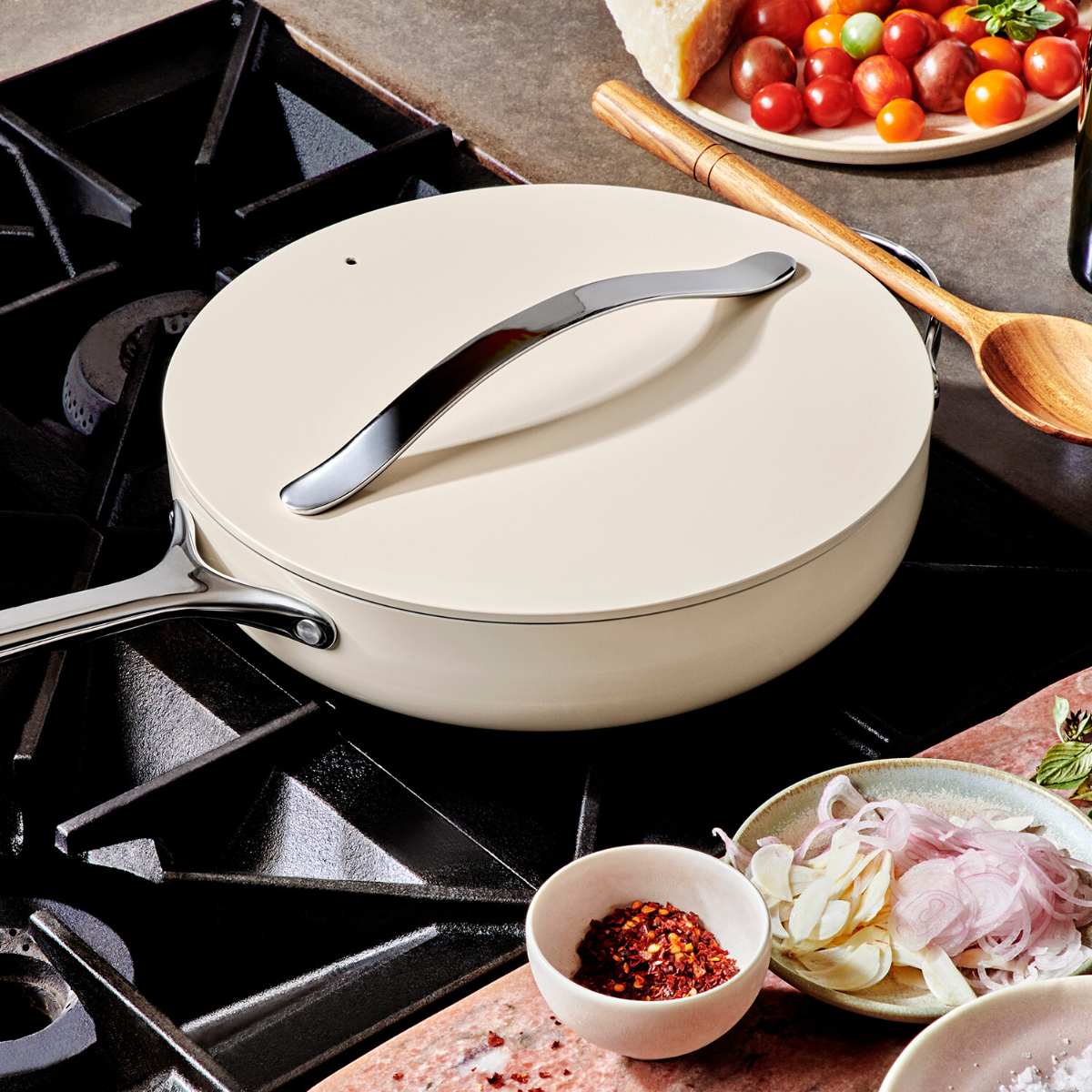 Sauté Pan | Induction, Gas, & Electric Safe | PTFE-Free | Caraway
Sauté Pan | Induction, Gas, & Electric Safe | PTFE-Free | Caraway
Caraway's Sauté Pan (lid included) allows for healthy cooking in the kitchen without harmful chemicals. It has a non-toxic ceramic-coated interior, is super durable, and makes sauteeing easy and fun!
Choosing the Right Vegetables
When it comes to sautéing vegetables, choosing the right ones can make all the difference. Some vegetables are better suited for this cooking method than others, and selecting the right ones can ensure that your dish turns out perfectly.
First and foremost, it’s important to choose vegetables that are fresh and in season. This will ensure that they are flavorful and have the right texture for sautéing. Some vegetables that are great for sautéing include bell peppers, carrots, onions, leeks, broccoli, cauliflower, zucchini, potatoes, asparagus, greens (like swiss chard, spinach, and kale), Brussels sprouts, corn, tomatoes, peas, celery, green beans, and sweet potatoes.
When selecting vegetables for sautéing, it’s important to take into account their texture. Vegetables that are too soft or too hard may not work well in this cooking method. For example, mushrooms are a great addition to sautéed dishes, but they can become too soft and mushy if cooked for too long. On the other hand, vegetables like bell peppers and carrots can hold up well to sautéing and maintain their texture.
Another factor to consider when selecting vegetables for sautéing is their size and shape. Vegetables that are cut into uniform pieces will cook more evenly and be easier to handle in the pan. It’s also important to choose vegetables that are similar in size so that they cook at the same rate.
Overall, choosing the right vegetables is key to creating a delicious and perfectly sautéed dish. By selecting fresh, in-season vegetables with the right texture and size, you can ensure that your sautéed vegetables turn out flavorful, tender, and perfectly cooked every time.
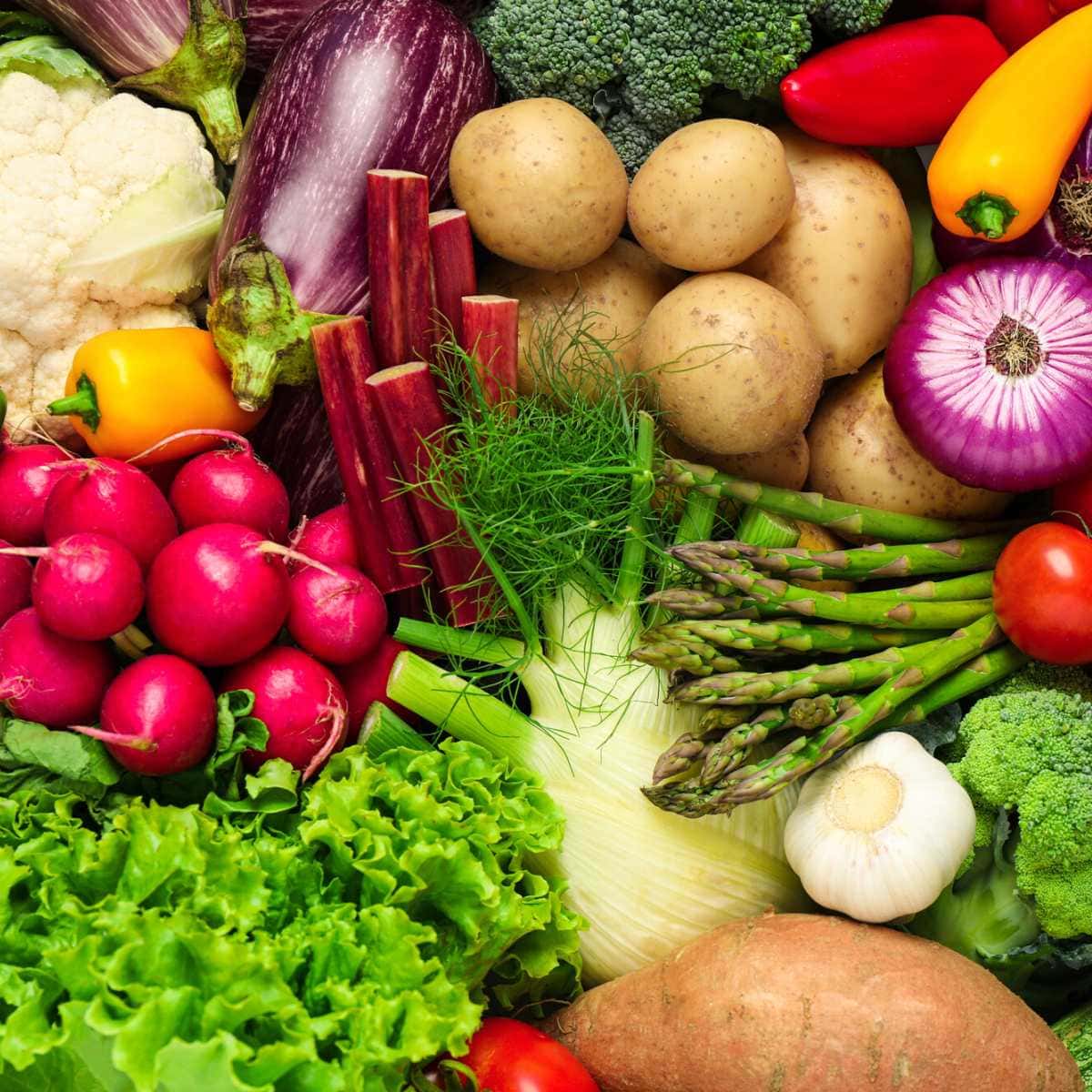
Preparing the Vegetables
Before sautéing vegetables, it is important to prepare them properly to ensure even cooking and optimal flavor. Here are some tips for preparing vegetables for sautéing:
Wash the Vegetables
Wash the vegetables thoroughly to remove any dirt or debris. Use a vegetable brush if necessary to scrub away any stubborn dirt. Rinse the vegetables under running water and pat dry with a clean towel. It is important to dry the vegetables thoroughly to prevent excess moisture from affecting the sautéing process.
Cut the Vegetables
Cut the vegetables into uniform bite-sized pieces to ensure even cooking. Remove any stems or discolored areas during this process. If sautéing more than one type of vegetable, cut them into smaller pieces so they cook at similar rates. It is important to make the pieces the same size to ensure they cook evenly.
Layer the Vegetables
When sautéing multiple vegetables, it is important to layer them properly in the skillet. Start with the vegetables that take the longest to cook, such as carrots or broccoli, and add the quicker-cooking vegetables, such as mushrooms or peppers, later in the cooking process. This will ensure that all the vegetables are cooked to perfection.
By following these simple steps, you can prepare your vegetables for sautéing like a pro. With properly prepared vegetables, you can achieve delicious, crisp-tender results every time.
The Sautéing Process
Sautéing is a quick and easy cooking technique that produces tasty, crisp-tender vegetables. Here are the essential steps to sautéing vegetables.
Heating the Pan and Oil
The first step in sautéing is to heat the pan and oil. A non-stick pan is ideal for sautéing because it requires less oil and is easier to clean. Heat the pan over medium-high heat and add enough oil to cover the bottom of the pan. Olive oil, canola oil, and butter are all good choices for sautéing.
Adding the Vegetables
Once the oil is hot, add the vegetables to the pan. Cut the vegetables into uniform bite-sized pieces to ensure even cooking. If you’re sautéing more than one type of vegetable, cut them into smaller pieces so they cook at similar rates.
Stirring and Cooking
Stir the vegetables frequently to ensure that they cook evenly and don’t burn. Cook the vegetables until they are crisp-tender and lightly browned. The cooking time will depend on the type of vegetable and its thickness. Here are some approximate cooking times for common vegetables:
| Vegetable | Cooking Time |
|---|---|
| Frozen peas | ~2 minutes |
| Greens (kale, spinach) | ~3 minutes |
| Mushrooms | ~7 minutes |
| Broccoli, asparagus | ~8 minutes |
| Cauliflower, onions | ~10 minutes |
| Bell peppers | ~10 to 12 minutes |
| Carrots | ~12 minutes |
Avoid adding salt until the end of the cooking process, as it can draw out moisture from the vegetables and make them soggy.
That’s it! With these simple steps, you can sauté vegetables like a pro.
Seasoning Your Sautéed Vegetables
When it comes to seasoning sautéed vegetables, there are a few key ingredients that can elevate the flavor of your dish. Salt and pepper are a classic combination that can enhance the natural flavors of your vegetables. Be sure to season your vegetables to taste, and don’t be afraid to add more salt and black pepper as needed.
Garlic is another popular seasoning for sautéed vegetables. Fresh minced garlic can add a pungent and savory flavor to your dish. You can also use garlic powder or granulated garlic if you don’t have fresh garlic on hand.
If you’re looking to add more depth of flavor to your sautéed vegetables, consider using a blend of seasonings. A sprinkle of oregano, thyme, red pepper flakes, and paprika are all great options that can complement a variety of vegetables. You can also use pre-made seasoning blends, such as Italian seasoning or Cajun seasoning.
For an umami-rich flavor, try adding a splash of soy sauce to your sautéed vegetables. This can add a savory and slightly salty flavor to your dish.
When seasoning your sautéed vegetables, it’s important to keep in mind the overall flavor profile of your dish. If you’re serving your vegetables as a side dish to a main course, consider using seasonings that will complement the flavors of your main dish. If you’re serving your vegetables as a standalone dish, feel free to experiment with different seasonings to find your perfect flavor combination.
Overall, seasoning your sautéed vegetables can be a fun and creative process. With a few key ingredients and a little experimentation, you can take your sautéed vegetables from bland to flavorful in no time.
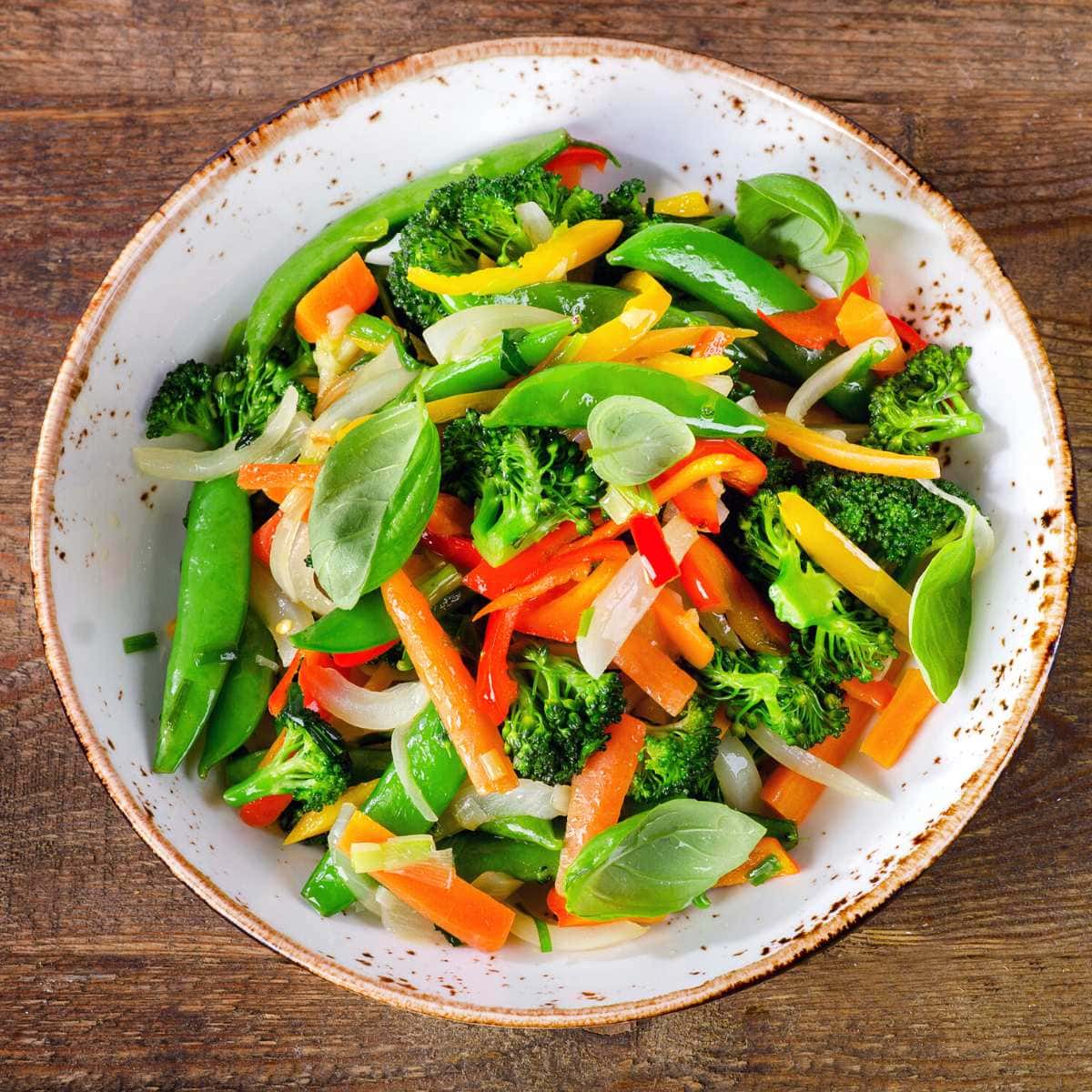
Adding Proteins and Other Ingredients
Sauteed vegetables can be a great side dish or even a main course with the addition of some protein. Here are some ideas for adding protein to your sauteed vegetables:
- Tofu: Cube firm tofu and add it to the skillet with the vegetables. Tofu is a great source of protein and will absorb the flavors of the vegetables and seasonings.
- Chickpeas: Drain and rinse a can of chickpeas and add them to the skillet. They will add a nutty flavor and a nice texture to the dish.
- Quinoa: Cook quinoa separately and add it to the skillet at the end. It will add a protein boost and a nutty flavor to the dish.
- Tempeh: Cut tempeh into small pieces and add them to the skillet with the vegetables. Tempeh has a nutty flavor and a firm texture that pairs well with sauteed vegetables.
If you want to turn your sauteed vegetables into a main course, you can also add some pasta. Cook the pasta separately and add it to the skillet with the vegetables and protein. Top with grated parmesan cheese for a delicious and satisfying meal.
Keep in mind that adding protein and other ingredients may affect the cooking time and temperature of your sauteed vegetables. Adjust the heat as needed and make sure everything is cooked through before serving.
Serving Suggestions
Sautéed vegetables are a versatile and healthy side dish that can be served with a variety of meals. Here are some serving suggestions to help you get the most out of your sautéed veggies:
- Serve as a side dish: Sautéed vegetables are a great side dish for any meal. They pair well with tempeh or tofu and can be served alongside rice, quinoa, or other grains. For a colorful and flavorful side dish, mix and match different vegetables such as bell peppers, zucchini, mushrooms, and onions.
- Healthy side dish: Sautéed vegetables are a healthy alternative to traditional side dishes like mashed potatoes or mac and cheese. They are low in calories, high in fiber, and packed with vitamins and minerals. To make your sautéed veggies even healthier, use heart-healthy oils like olive oil or coconut oil, and avoid adding too much salt or sugar.
- Meal prep: Sautéed vegetables are perfect for meal prep. They can be made in advance and stored in the fridge for up to 3-4 days. To reheat, simply heat them up in a pan or microwave. Sautéed vegetables can be used as a side dish or added to salads, wraps, or sandwiches.
- Dinner: Sautéed vegetables can also be used as a main dish for a vegetarian dinner. Add some protein like tofu, chickpeas, or lentils to make it more filling. Serve with a side of whole grains like quinoa or brown rice for a complete and nutritious meal.
Overall, sautéed vegetables are a simple, healthy, and delicious addition to any meal. With these serving suggestions, you can enjoy them in a variety of ways and make them a staple in your diet.
Storing Sauteed Vegetables
When it comes to storing sauteed vegetables, it’s important to cool them down properly before storing them. Once cooled, store the vegetables in an airtight container in the refrigerator for up to three days. When reheating, it’s best to do so in a pan over medium heat with a splash of water or broth to prevent the vegetables from drying out.
Nutritional Benefits of Sautéed Vegetables
Sautéed vegetables are not only delicious but also packed with essential nutrients that are vital for maintaining a healthy diet. Here are some of the nutritional benefits of sautéed vegetables:
High in Fiber
Vegetables are a great source of dietary fiber, which is essential for maintaining good digestive health. Sautéing vegetables can help retain their fiber content, making them a great addition to any diet for optimal nutrition.
Low in Calories and Sodium
Sautéed vegetables are low in calories, making them a great option for those who want to maintain a healthy weight. They are also low in sodium, which is important for those who need to watch their sodium intake.
Rich in Vitamins and Minerals
Sautéing vegetables can help retain their nutritional content, making them a great source of vitamins and minerals. Vegetables like broccoli, spinach, and kale are rich in iron, bok choy and okra are high in calcium, sweet potatoes and squash are high in potassium, and bell peppers and tomatoes are high in vitamin C.
Low in Saturated Fat and Cholesterol
Sautéed vegetables are low in saturated fat and cholesterol, making them a heart-healthy option. Adding a small amount of healthy fat, like olive oil, can help increase the absorption of fat-soluble vitamins.
Low in Carbohydrates
Sautéed vegetables are also low in carbohydrates, making them a great option for those who are watching their carb intake. They are a great source of complex carbohydrates, which are important for maintaining steady blood sugar levels.
In summary, sautéed vegetables are a great addition to any diet. They are low in calories, high in fiber, and packed with essential vitamins and minerals. Adding a variety of sautéed vegetables to your meals is an easy way to increase your nutrient intake and maintain a healthy diet.
Common Mistakes to Avoid
When it comes to sautéing vegetables, there are a few common mistakes that people often make. By avoiding these mistakes, you can ensure that your vegetables turn out perfectly every time.
Overcrowding the Pan
One of the most common mistakes people make when sautéing vegetables is overcrowding the pan. If there are too many vegetables in the pan at once, they won’t cook evenly, and you’ll end up with some vegetables that are overcooked and others that are undercooked. Additionally, overcrowding the pan can cause the vegetables to steam rather than sauté, which can result in soggy, mushy vegetables.
To avoid overcrowding the pan, make sure to use a pan that is large enough for the amount of vegetables you’re cooking. If you’re cooking a large batch of vegetables, you may need to sauté them in batches to ensure that they cook evenly.
Using the Wrong Type of Pan
Another common mistake people make when sautéing vegetables is using the wrong type of pan. If you use the wrong kind of pan, the vegetables won’t brown properly, and you’ll end up with soggy, mushy vegetables. Additionally, if you use a pan with sides that are too high, it can be difficult to toss the vegetables properly, which can also result in uneven cooking.
To ensure that your vegetables brown properly and cook evenly, use a ceramic-coated saute pan. These types of pans conduct heat more evenly and allow the vegetables to brown properly.
Not Drying the Vegetables
Finally, another common mistake people make when sautéing vegetables is not drying them properly before cooking. If the vegetables are wet, they won’t brown properly, and you’ll end up with soggy, mushy vegetables.
To ensure that your vegetables brown properly, make sure to dry them thoroughly with a paper towel before cooking. Additionally, if you’re using frozen vegetables, make sure to thaw them and dry them thoroughly before cooking.
By avoiding these common mistakes, you can ensure that your sautéed vegetables turn out perfectly every time.
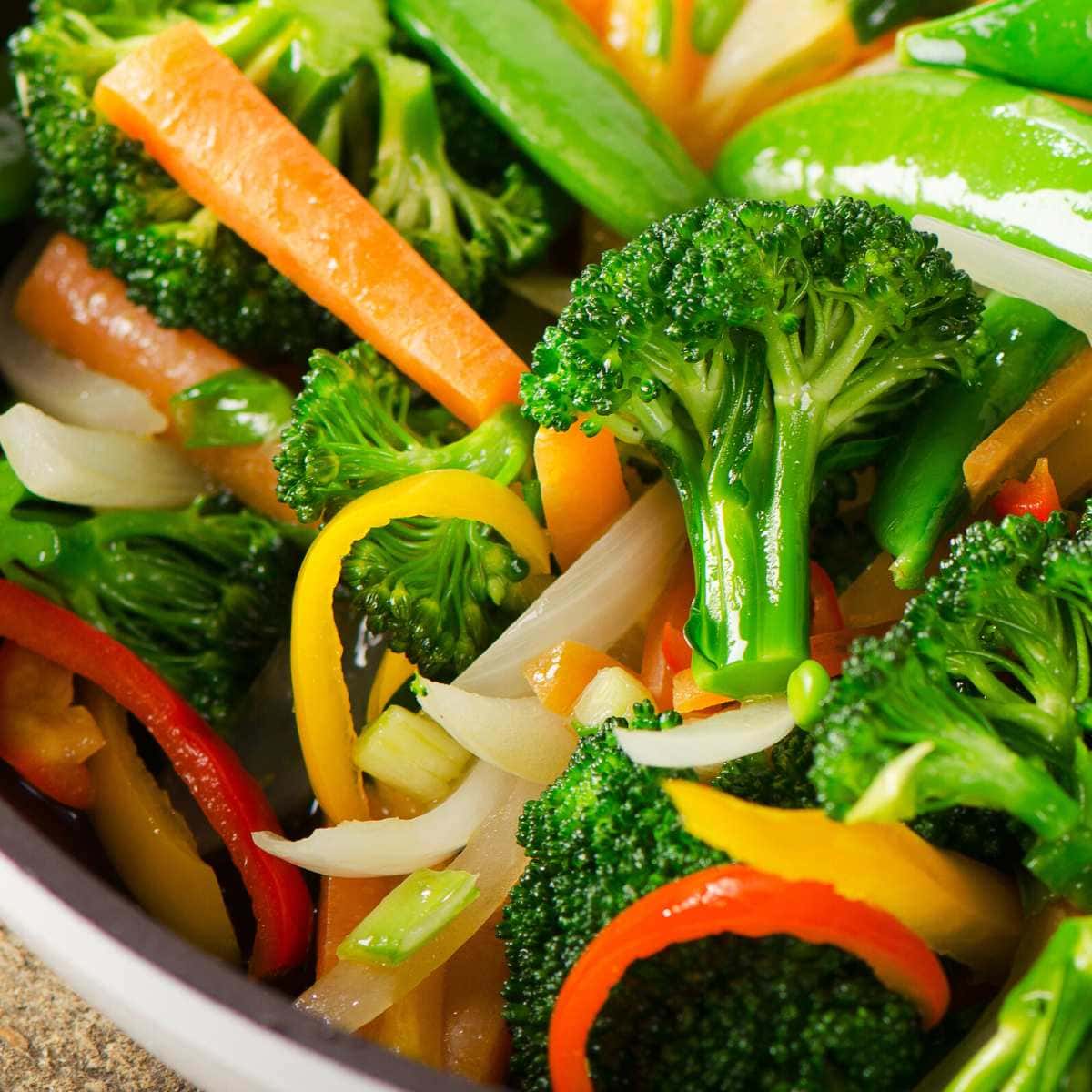
Variations of Sautéed Vegetables Recipes
Sautéed vegetables are a quick and easy way to add some color and flavor to any meal. There are many variations of sautéed vegetable recipes that can be made with different combinations of vegetables, oils, and seasonings. Here are a few examples:
Sauteed Vegetables with Fresh Herbs
To add some extra flavor to your sautéed vegetables, try adding some fresh herbs like basil, parsley, or thyme. Simply chop the herbs and add them to the pan during the last minute of cooking. This will infuse the vegetables with the herbs’ aroma and flavor.
Colorful Sautéed Vegetables
To make your sautéed vegetables more colorful, try using a variety of vegetables like red bell pepper, squash, and red onion. These vegetables will add a pop of color to your plate and make the dish more visually appealing.
Sauteed Zucchini and Squash
Zucchini and squash are perfect for sautéing because they cook quickly and are very flavorful. To make sautéed zucchini and squash, simply cut the vegetables into bite-sized pieces and sauté them in a pan with butter or olive oil until they are tender and slightly browned.
Stir-Fry Style Sauteed Vegetables
To make sautéed vegetables with a stir-fry style, cook the vegetables in batches to ensure that they cook evenly. Start with the vegetables that take the longest to cook, like carrots or broccoli, and then add the quicker-cooking vegetables like snow peas or peppers. Toss the vegetables together in the pan with some soy sauce or sugar for a flavorful finish.
Maple-Glazed Sauteed Carrots
For a sweet and savory take on sautéed vegetables, try making maple-glazed sautéed carrots. Simply sauté the carrots in a pan with butter or olive oil until they are tender, then add a mixture of maple syrup and vinegar to the pan. Let the mixture steam for a few minutes until the carrots are coated in the glaze.
These are just a few examples of the many variations of sautéed vegetable recipes that can be made. Experiment with different combinations of vegetables, oils, and seasonings to find your favorite recipe.
Frequently Asked Questions
The best oil to use when sautéing vegetables is one with a high smoke point, such as canola oil, grapeseed oil, or avocado oil. These oils can withstand high heat without burning or smoking, which can give your vegetables a bitter taste.
Common seasonings to use when sautéing vegetables include garlic, onion, salt, pepper, and herbs like thyme, rosemary, or oregano. You can also add a splash of vinegar or lemon juice for a tangy flavor.
To prevent vegetables from becoming soggy when sautéing, make sure to cut them into uniform pieces so they cook evenly. Don’t overcrowd the pan, as this can cause the vegetables to steam instead of sauté. Use a large non-stick skillet and avoid stirring the vegetables too often, as this can release their moisture.
Some healthy vegetables to sauté include broccoli, bell peppers, zucchini, mushrooms, onions, and spinach. These vegetables are low in calories and high in nutrients like fiber, vitamins, and minerals.
The length of time you should sauté vegetables for depends on the type and size of the vegetables. Generally, you should sauté vegetables for 5-10 minutes, or until they are tender and slightly browned. Be sure to stir the vegetables occasionally to prevent burning.
To sauté vegetables for weight loss, use a minimal amount of oil and avoid adding extra salt or sugar. Choose low-calorie vegetables like leafy greens, peppers, and mushrooms, and add flavor with herbs and spices instead of high-calorie sauces. Be mindful of portion sizes and avoid overeating.

